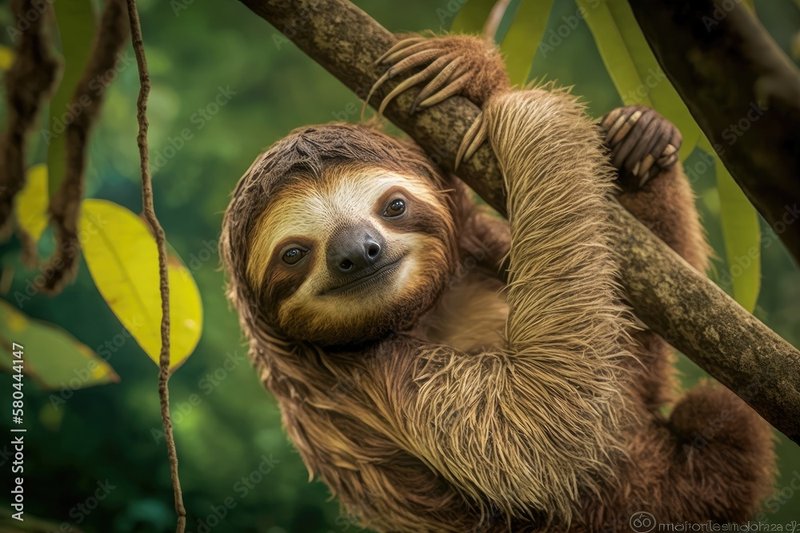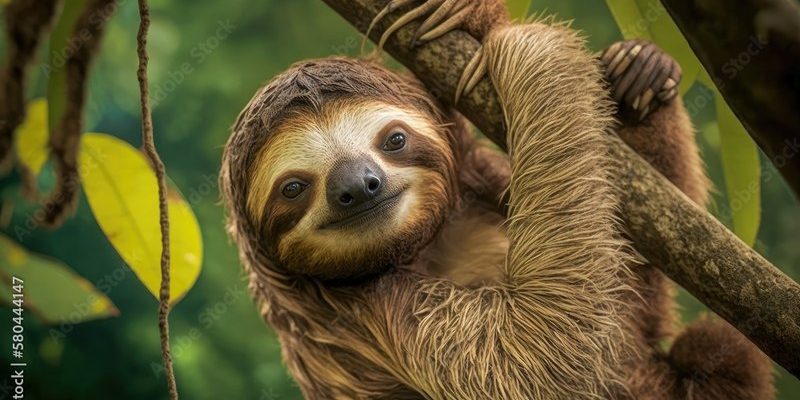
Imagine sitting across from someone, sipping coffee, and diving into the fascinating world of sloths. You might be surprised to learn that these slow-moving mammals have inspired tales, symbolism, and even artistry that resonate with several human experiences. From ancient mythologies to modern depictions in media, the sloth’s unique lifestyle has sparked creativity and understanding.
So, let’s unravel the tapestry of sloths in culture and folklore, seeing how they’ve influenced our storytelling, beliefs, and even societal views.
Sloths in Indigenous Mythology
Many indigenous cultures across Central and South America view sloths as more than just animals; they see them as wise beings. In ancient myths, sloths often symbolize the connection between the earth and the heavens. For instance, the Amazonian tribes tell tales of sloths being the guardians of the forest, embodying the spirit of nature that moves slowly yet purposefully. These stories highlight how slow living is sometimes a reflection of a deeper understanding of life and its cycles.
In some narratives, sloths are depicted as mediators between humans and the gods. They remind us to slow down and appreciate the world around us. Imagine the wisdom behind such stories: encouraging people to connect with nature at a more profound level. Sloths embody patience, a quality that many cultures believe is essential for a harmonious life.
Furthermore, the symbolism of sloths can be seen as representing transformation. The slow, deliberate movement of these animals is sometimes compared to the slow progress of personal growth. This profound representation encourages people to embrace their pace in life, promoting the idea that good things take time.
Sloths in Popular Culture
Fast forward to modern times, and sloths have made a significant splash in popular culture. From cartoons to social media, these adorable animals are everywhere! Who hasn’t watched a video of a sloth slowly clambering up a tree, feeling their stress melt away just by watching it? Honestly, they have become symbols of relaxation in our fast-paced lives.
Films like “Zootopia” have played a big part in this representation. The character of the sloth, working at the DMV, humorously highlights how society often feels rushed, contrasting with the sloth’s laid-back nature. This portrayal offers a critical reflection on our lifestyle choices and the need for balance, sparking laughter while delivering an essential message.
On social media, sloths are often used as emblems of self-care. Memes featuring sloths with captions like, “Take it slow” or “Just relax” have made their way into our feeds, reminding everyone to take a moment to breathe. This connection between sloths and our everyday lives reflects a cultural shift towards valuing rest, even if it means moving at a more leisurely pace.
Sloths in Art and Literature
When we look at art and literature, sloths frequently appear as symbols of tranquility. In various artworks, sloths are depicted lounging among lush greenery, creating a serene scene that evokes a sense of peace. Artists often appreciate the sloth’s unique physical attributes, using them to convey a deeper message about the importance of balance and relaxation in our chaotic lives.
In literature, sloths often embody themes of wisdom and patience. They appear in children’s books, teaching young readers about the value of slow living. A story about a sloth taking its time to enjoy life’s little pleasures can resonate deeply with readers, reinforcing the idea that not everything has to be done in a hurry. These narratives serve as gentle reminders to embrace our rhythm, no matter how slow it may seem.
Additionally, sloths have been featured in poetry, where they symbolize introspection and contemplation. Their leisurely nature inspires reflection, allowing readers to ponder life’s intricacies while appreciating the beauty in simplicity. It’s fascinating how these creatures have inspired diverse artistic expressions, all tied to their unique way of life.
Sloths and Environmental Symbolism
As climate change and environmental concerns grow, sloths have taken on a new role as environmental symbols. Their reliance on specific habitats, like tropical rainforests, highlights the fragility of ecosystems. Many conservation efforts now include sloths in their messaging, using them to raise awareness about the importance of preserving their habitats.
Organizations and campaigns often use sloths to symbolize resilience and the need for sustainable living. By showcasing these adorable creatures, they remind us of what’s at stake if we don’t act to protect nature. It’s a clever way to connect a charismatic animal to a significant cause, making the issue relatable and urgent.
Moreover, sloths represent the concept of “slow living” in environmental discourse. This philosophy encourages people to consider their impact on the planet and promotes a lifestyle that values quality over quantity. The sloth’s message—valuing patience and the environment—resonates with those seeking a more sustainable future.
Comparing Sloths to Other Animals
When we think about animal symbolism, it’s interesting to compare sloths to other creatures like turtles and owls. Turtles, like sloths, represent wisdom and longevity. Both animals move slowly and symbolize patience in a fast-paced world. However, turtles often symbolize protection and perseverance due to their hard shells, while sloths focus more on relaxation and tranquility.
Owls, on the other hand, are often associated with knowledge and insight. Unlike sloths, who embody a slow-paced lifestyle, owls symbolize keen observation and intuition. While both animals encourage us to value our own rhythms, they do so in different ways. Owls urge us to think critically, while sloths invite us to simply be.
These comparisons showcase how different animals reflect various aspects of human experience. Sloths teach us about *slowing down*, while turtles and owls add layers of meaning related to wisdom, knowledge, and resilience. It’s a reminder that nature is rich with symbols—each serving a unique purpose in our lives.
In exploring how sloths are represented in culture and folklore, it becomes clear that these animals are much more than just cute creatures. They symbolize a slower, more deliberate way of living that resonates with many people today. Whether through ancient myths, modern media, or artistic expressions, sloths remind us of the virtues of patience, wisdom, and connection to nature.
So, the next time you see a sloth in a meme or a movie, remember the wealth of meaning behind it. They encourage us to take a moment, breathe, and appreciate the journey—no matter how slow it may be. By embracing the spirit of the sloth, we can cultivate a lifestyle that values relaxation, mindfulness, and a deeper connection to the world around us.

